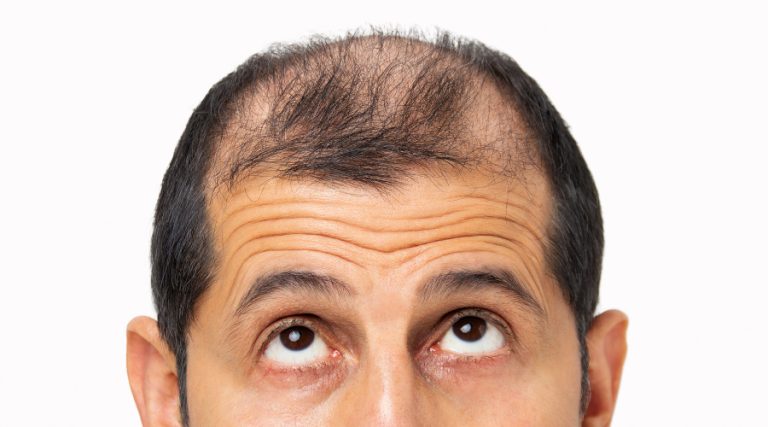Hair Restoration or Hair Transplant: Understanding the Differences

Hair Restoration or Hair Transplant…Hair loss can impact confidence and self-image, so solutions like hair restoration and hair transplants are more sought after than ever. However, understanding the distinctions between these treatments is crucial to making an informed decision. Dr. Steven Davis, a board-certified plastic surgeon and expert in hair restoration, provides insights into both options, explaining the differences in procedures, techniques, and recovery times to help patients determine the right path for their unique needs.
What is Hair Restoration?
Hair restoration is a broad term encompassing various non-surgical treatments that prevent hair loss and stimulate hair regrowth. These treatments range from topical solutions and oral medications to advanced therapies, such as PRP (platelet-rich plasma) injections and low-level laser therapy (LLLT). Hair restoration is often recommended for those in the early stages of hair thinning or who are not yet ready for surgery.
One key benefit of hair restoration is its noninvasive nature. Treatments like PRP injections involve minimal discomfort and no surgical intervention, which can be ideal for patients seeking a gradual approach to combat hair loss. In addition, these techniques often have shorter recovery times and can be easily integrated into a patient’s routine. Dr. Davis often recommends these methods to patients looking for early intervention or preventative measures.
What is a Hair Transplant?
A hair transplant, by contrast, is a surgical procedure specifically designed to relocate hair follicles from one area of the scalp (usually the back or sides, where hair is more resistant to loss) to areas experiencing balding or thinning. Hair transplant procedures are often more effective for individuals with advanced hair loss who may not see significant results from non-surgical restoration techniques.
There are two primary hair transplant techniques:
- Follicular Unit Transplantation (FUT): Also known as the strip method, FUT involves removing a strip of skin from the donor area, usually at the back of the scalp. The surgeon then divides this strip into small follicular units, transplanted into the thinning or balding areas. FUT can be an effective option for those needing extensive coverage, but it does leave a linear scar that may be visible if the hair is kept very short.
- Follicular Unit Extraction (FUE): This technique involves extracting individual hair follicles from the donor area and transplanting them into the recipient site. FUE is minimally invasive compared to FUT and leaves no linear scar, making it popular for those who prefer short hairstyles. Dr. Davis specializes in this technique at Davis Hair Restoration, as it offers patients a more natural-looking result with less visible scarring.
Critical Differences Between Hair Restoration and Hair Transplant
The primary distinction between hair restoration and hair transplant lies in the invasiveness and intended outcomes of the treatments. While both approaches aim to address hair loss, they serve different purposes and involve various levels of commitment, recovery, and effectiveness.
- Procedure Complexity: Hair restoration is generally non-surgical, using techniques like PRP or LLLT, which involve minimal intervention. Hair transplants, however, require surgery, where hair follicles are harvested from a donor site and implanted into the recipient area.
- Ideal Candidates: Hair restoration treatments are most effective for individuals in the early stages of hair loss. In contrast, hair transplants suit those with more significant hair thinning or balding. Hair transplant candidates should have a stable donor area to ensure the best results.
- Recovery Time: Non-surgical hair restoration procedures generally have little to no downtime. Patients may resume their daily activities immediately following treatment, with results appearing gradually over weeks or months. In contrast, hair transplants involve a more intensive recovery. FUT typically requires a few weeks for healing, with sutures in place for about ten days. FUE has a shorter recovery period, but patients should still allow one to two weeks for visible signs of the procedure to diminish.
- Results: The results of hair restoration treatments, such as PRP or laser therapy, may vary depending on individual response and require ongoing sessions to maintain effectiveness. Hair transplants, however, provide permanent results as the transplanted follicles are generally more resistant to hair loss. Over time, these transplanted hairs blend seamlessly with the natural hair, offering a fuller and more permanent solution.
Hair Restoration or Hair Transplant: Technique and Technology
Advancements in technology have enhanced both Hair Restoration or Hair Transplant procedures. For example, hair restoration options at Davis Hair Restoration, led by Dr. Davis, include PRP therapy, which uses the patient’s platelet-rich plasma to promote hair growth. Dr. Davis’s clinic also offers LLLT, a laser light technique to stimulate follicles without surgery.
Dr. Davis and his team utilize precision methods in hair transplants to achieve the most natural-looking results. FUE, the preferred technique, involves individual follicle extraction, reducing visible scarring and allowing for a more natural hairline. At Davis Hair Restoration, we understand that every patient’s hair loss journey is unique, so Dr. Davis tailors his approach based on individual needs and desired outcomes.
Making the Right Choice: Hair Restoration or Hair Transplant
When deciding between hair restoration and hair transplant, consider the level of hair loss, personal goals, and willingness to undergo a surgical procedure. Non-surgical hair restoration is ideal for those in the early stages of hair loss who want to take preventive steps. Hair transplants offer a reliable option for individuals with advanced hair loss or a preference for a more permanent solution.
During a consultation, Dr. Davis will evaluate hair density, scalp health, and long-term goals to recommend the best action. Choosing the right approach can be a game-changer in restoring confidence and enhancing appearance.
Schedule Your Hair Restoration or Hair Transplant Consultation with Davis Hair Restoration Today!
Whether considering Hair Restoration or Hair Transplant if you’re exploring options for hair loss, the expert team at Davis Hair Restoration is here to help. Led by Dr. Steven Davis, a board-certified plastic surgeon with extensive experience in both surgical and non-surgical hair restoration techniques, we provide individualized care and cutting-edge solutions. Contact Davis Hair Restoration today to schedule your consultation and take the first step toward revitalized hair and renewed confidence.






